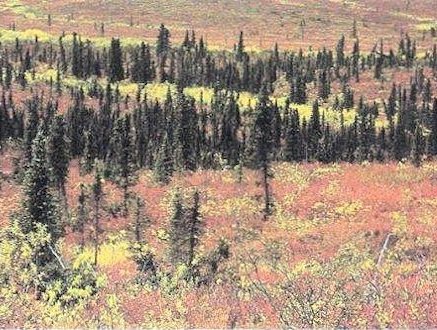
|
Bird Ecosystem -- Tundra
The north of the northern coniferous forest and extending from the Atlantic tot he Pacific and north to the Arctic Ocean lies a soggy, open environment called the tundra. The trees of the tundra -- birches, willows, and evergreens --- are so dwarfed that the ecosystem has the appearance of wet. treeless meadow. Even in summer the tundra is usually soggy' not far below the surface lies a permanently frozen layer that prevents surface water from seeping into the ground. The moisture and long days in summer contribute to lush summer vegetation that supports a rich variety of nesting birds. Most North American geese and many of our shorebirds are tundra species; The Canada Goose, the Snow Goose, the Tundra Swan, the Lesser Golden-Plover, and the Ruddy Turnstone. The Snowy Owl, the Lapland Longspur, and the Snow Bunting further characterize the tundra. Although the tundra makes a good nesting area, the bitter winter environment requires that most species migrate to more hospitable regions. Only a few, such as various species of ptarmigan, remain as year-round residents. Due to harsh winters and a layer of permafrost just below the surface of the soil, Tundra is usually treeless. A few sheltered areas, such as this low arctic, valley, support thin stands of stunted spruce. |
| The Tundra is Usually Treeless | |